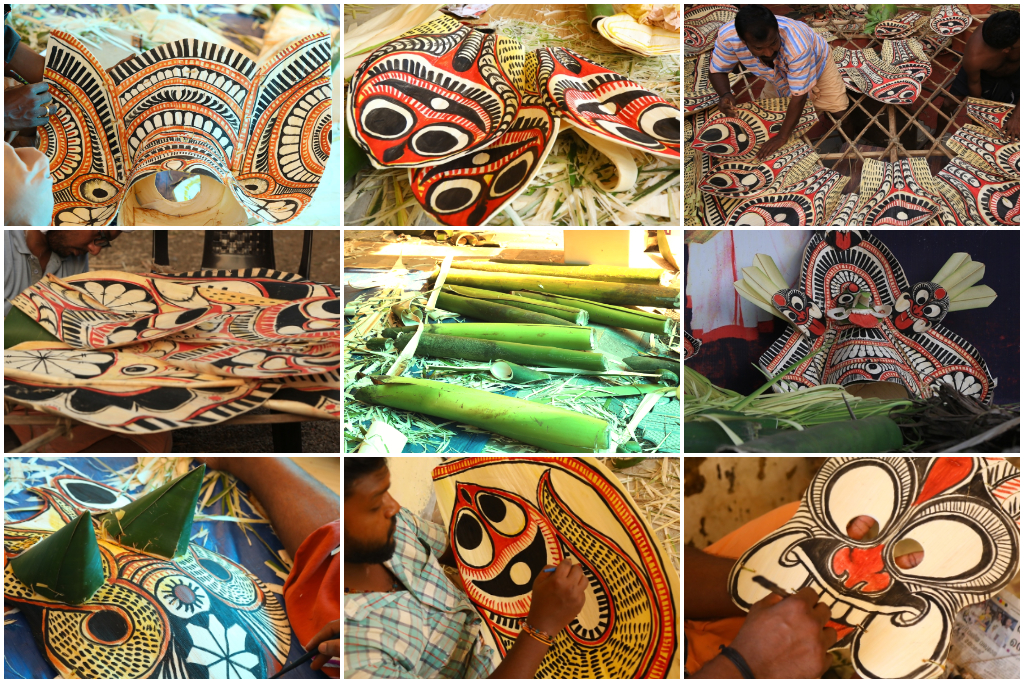
Like Padayani performance, it is equally interesting to watch the villagers effortlessly making the Kolams or the masks worn by the Padayani performers. Kolams are made out of fresh green spathe of the arecanut palm and the long tender coconut leaves (kuruthola).
Designed by the members of the Ganaka community and is executed by a group of villagers. The green portion of the spathe is cut out in the required shape and size and is then smoothened. To keep the freshness of the spathe all the kolams are made just before the performance. These cut out pieces is elaborately decorated using paintings. The brush to paint this spathe is made out of a small length of the stem of Kuruthola, one end of which is beaten and crushed to become a brush.
The colours used to make these kolams are purely natural. The black colour is made from the soot of burned coconut shells; red is prepared by grinding red stones. The yellow colour is made from manjal (turmeric). The white colour is made out of using polishing the green spathe, so there is no need for white paint. For green colour the spathe will not be smoothened where ever the green colour is needed, the original colour is left untouched. Once the decoration is over, they are joined together with the midribs of the blade of a coconut leaf. Some of these kolams are worn out on the head as a headgear and some as masks for the faces of the dancers. The skeleton for making the headgear is made of thin strips of smoothened arecanut wood. In some places, the biggest kolam, representing the goddess Bhadrakaali, is made of 1001 pieces of spathe and is carried on wheels.
All these kolams can be used only for a single performance and once it is over the kolam is thrown away. Each year new kolams are made for the performance. Gods and Goddesses represented in these kolams are Ganapathi, Marutha, Yakshi, Pakshi, Kaalan, Kuthira, Bhairavi, Maadan, and Kanjira Maala.